Goal setting has long proven to be a powerful technique for enhancing performance. A goal represents more than a mere desire. Behind every goal lies an intention to drive action, which pushes us toward a different future state from our current situation.
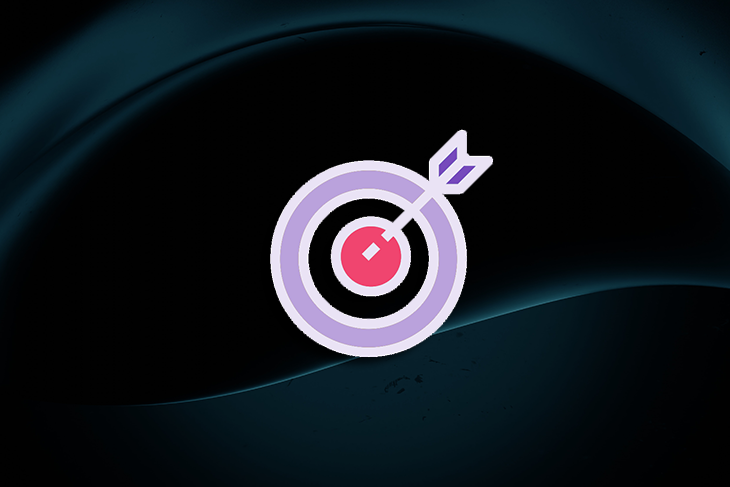
As someone gets closer to reaching their goal, they often experience increased motivation. This phenomenon is referred to as the goal gradient effect.
In product design, this principle keeps users engaged and motivated to complete specific actions. Think of loyalty programs or leveling systems. They’re designed to create a sense of progress and encourage users to keep going. In this article, we’ll talk about the goal gradient effect, its influence on user behavior, and some practical ways to apply it within product design.
The goal gradient effect shows that people put more effort toward their goals as they get closer to achieving them. It’s based on the psychological feelings of accomplishment and progress. As people move closer to a goal, their natural excitement about succeeding grows, which amps up their motivation to finish the task.
This effect has a significant impact on users’ engagement and behavior when using products. By understanding a user’s emotional journey during an experience, designers can use different techniques to influence their motivation and actions. This can involve creating a sense of progress and achievement to guide users toward their goals and get them excited about using the product.
The goal gradient effect is driven by a few psychological mechanisms that affect human behavior. Those mechanisms include anticipation of reward, cognitive biases, and the power of progress. Let’s dive into each one to understand how they contribute to the goal gradient effect.
As people get closer to their goal, they start imagining how achieving it will feel. Think of a marathon runner turning that last corner and finally seeing the finish line up ahead. The anticipation of crossing the line drives them to run as fast as they can and use up all their energy because they know that they will be rewarded as soon as they’re finished.
This anticipation mechanism triggers a rush of dopamine, a brain chemical linked to pleasure and motivation. Dopamine hits you when you eat delicious food or receive a notification from social media. This feeling of pleasure motivates people to put in more effort when they can picture the finish line.
People are more likely to remember what still needs to be done rather than what they’ve already completed. Unfinished tasks tend to occupy their minds more than the ones they’ve finished, as they focus on the future and what still needs to be done to reach their goals.
This cognitive bias becomes more pronounced the closer they are to their goal, which causes them to be hyper aware of the tasks that they still need to do. This awareness pushes them to put in more effort to check things off the list and reach their goal.
Progress is a powerful motivator. The mere perception of moving forward can trigger a sense of accomplishment, even if the progress is not real. Interfaces often use progress indicators, such as loading bars, pulsing UI skeletons, or spinners, to give the illusion of progress.
When people see themselves achieving small milestones toward their goal, they feel a sense of confidence and determination that they are doing something right. This causes them to invest more effort into maintaining that progress.
Now that we’ve got a grasp on what drives the goal gradient effect, let’s understand how it can be applied in product design. A useful approach is using it to maintain user engagement. When people find a product enjoyable, they naturally keep using it and spread the word.
User engagement happens when they feel they’re succeeding and making progress toward their goals while using the product. It’s a similar concept to earning points and leveling up in a game. These techniques can boost engagement in users to keep using the product because it feels rewarding and satisfying.
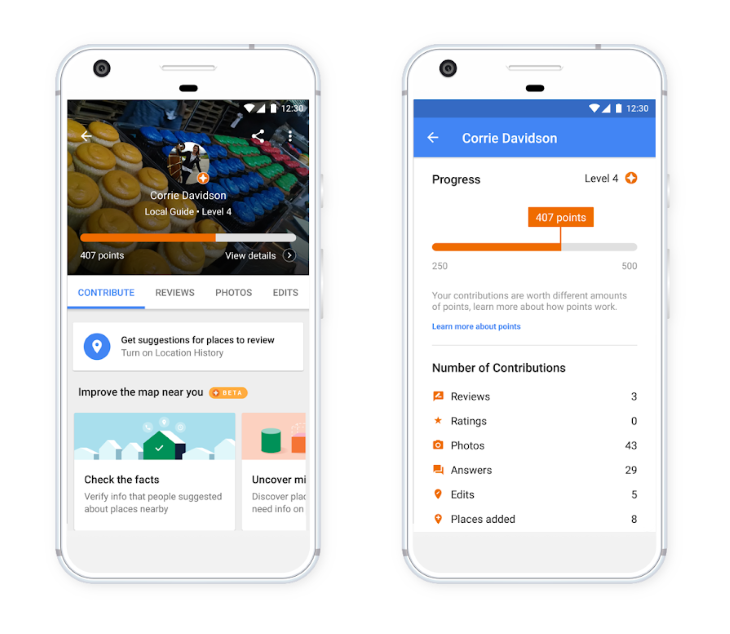
Another way that the goal gradient effect can help is by driving completion rates. Commonly tracked for user onboarding flows, completion rates indicate the percentage of users that complete a key task or flow within a product.
These tasks can be influential in converting a user from free to paid, or simply making them more emotionally invested in the product. Visual progress indicators such as progress bars or checklists can motivate your users to stay on track and drive those completion rates up.
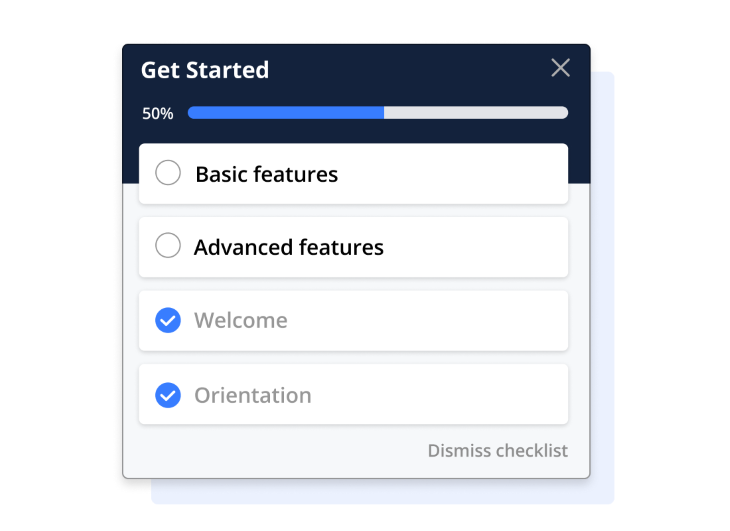
Lastly, the goal gradient effect can encourage desired behaviors by bringing in rewards or incentives that tempt users to act in a specific way. For instance, think of a language learning app. It might reward users every time they finish a lesson. This nudges them to keep learning, driven to hit the next milestone. And as they get closer to their goal, the thought of each reward boosts their learning drive. This technique is kind of like training a dog to do tricks — you give them treats after they nail each move.
When people work toward a goal, experiencing a sense of progress and accomplishment becomes essential to maintaining their motivation. This heightened motivation keeps them naturally engaged with using the product.
Both progress tracking and feedback mechanisms can play a significant role in leveraging the goal gradient effect in product design. Here are a few techniques to consider.
Progress bars, a widely used visual indicator, show users how far along they have gotten through a journey. They offer a tangible perception of moving forward, which effectively triggers the goal gradient effect. As users complete tasks, the progress bar fills up. This motivates them to continue striving for their goals until the progress bar is filled.
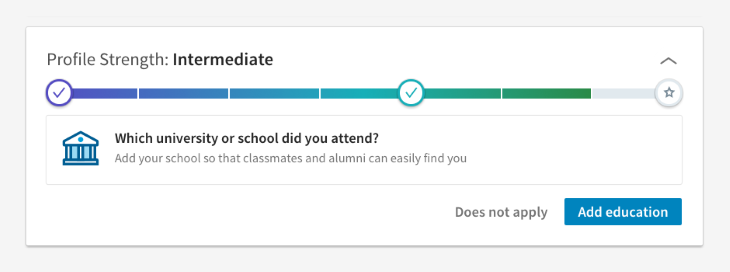
Breaking down larger goals into smaller milestones serves two purposes. Firstly, it’s much easier to start a journey when the goal is broken down. Each milestone seems much more attainable, as the user is not overwhelmed and can focus on one thing at a time. Put simply, breaking down complex tasks into subtasks makes them appear less daunting.
Secondly, achieving each milestone provides an opportunity to reward users, which then generates a sense of accomplishment. This approach fosters user engagement by building incremental progress toward an ultimate goal.
Now, the rewards can appear in many forms, such as badges, trophies, or virtual currency. These achievement systems reward users for reaching specific milestones.
Each time they receive a reward, it indicates that they are progressing through their journey. This motivates users to continue working toward unlocking more achievements, which then enhances the impact of the goal gradient effect.
Feedback tailored toward the user can be provided at different stages of a user’s journey. This personalized feedback can reinforce their progress, similar to giving them a pat on the back.
Positive feedback acknowledges their efforts, which gives them a sense of accomplishment. Customized recommendations and guidance can also assist users in refining their approach to reaching their goals.
Gamification is a popular way that many products use to keep their users engaged. Typical games present users with challenges to conquer, whether it’s defeating another team in a shooting game, or completing a puzzle.
Gamification can enhance the goal gradient effect by motivating users to achieve milestones in exchange for rewards. There are numerous techniques to incorporate gamification and rewards into a product, such as levels, badges, leaderboards, and virtual currencies.
Levels are a classic gamification element that shows user progress. A classic example of levels used in real life is in school. Each year, students progress by grade level until they graduate from school. As users advance through levels, they feel a sense of accomplishment and are rewarded at each milestone. This fuels their motivation to keep pursuing their goal.
Badges are used as a status symbol and are earned by achieving certain milestones or completing specific tasks. A badge represents a certain level of expertise, which can be seen in a military setting. It fosters a sense of pride and achievement, which triggers the goal gradient effect.
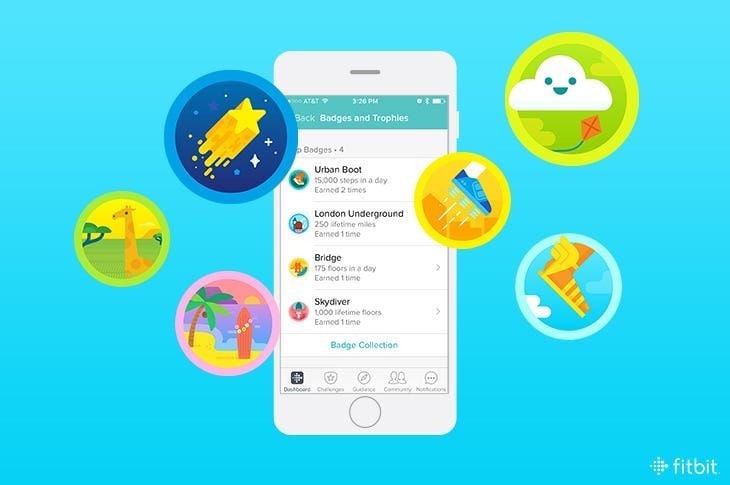
Virtual currencies can be presented in different forms, such as points or tokens. Their purpose is to create a feeling of value and measure progress toward a goal. Users can earn these virtual currencies by completing tasks or reaching milestones.
Leaderboards are often used in online communities and products that have a social aspect. Combined with the use of points, a leaderboard shows users where they stand among a ranked list of all competing users. This can bring out the competitiveness in users and lead them to put more effort into their goals as they see themselves moving up the ranks.
People are inherently social by nature. Social proof and community are key aspects in reinforcing the goal gradient effect. They can create an environment where users feel connected, engaged, and motivated to reach their goals.
A few techniques worth exploring include user testimonials, social sharing, and collaborative challenges.
If you’ve ever watched a video of a person traveling somewhere and felt the urge to go there yourself, then you’ve been influenced by a user testimonial. Social media makes it easy for people to share their success stories as a form of social proof. These testimonials encourage others to try achieving the same goal, whether it’s weight loss or savings.
Seeing real people achieve a goal inspires others to do the same and helps them realize that it is possible. A user testimonial could be the motivation that pushes someone to start working toward their own goal.
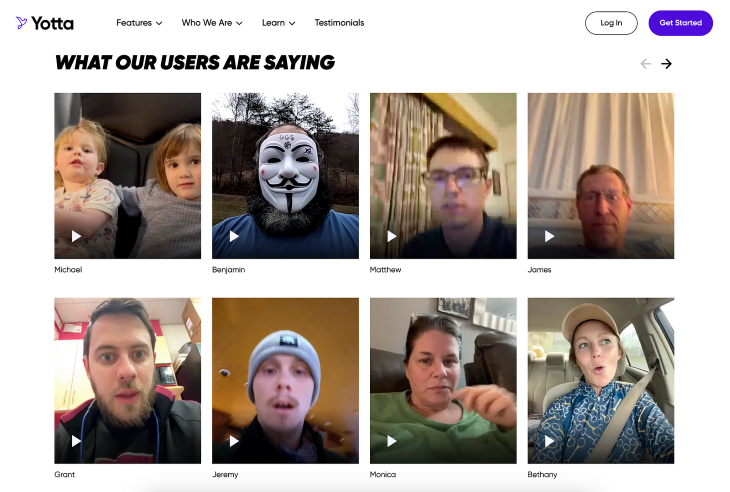
Nowadays, people commonly share their journeys online for everyone to follow along. Social sharing keeps people accountable and also fosters a sense of pride and community as it encourages others to share their journeys as well. This is a popular trend in fitness communities where people share workout or weight loss updates.
When users share their progress toward a goal, they become more committed and others get inspired to join in, which amplifies the goal gradient effect.
People love a good challenge, especially one that brings them together. Collaborative challenges foster a sense of community among users and motivate everyone to contribute. The combined efforts of the team drive them closer to their goal, which is a powerful way to boost engagement and maximize the goal gradient effect.
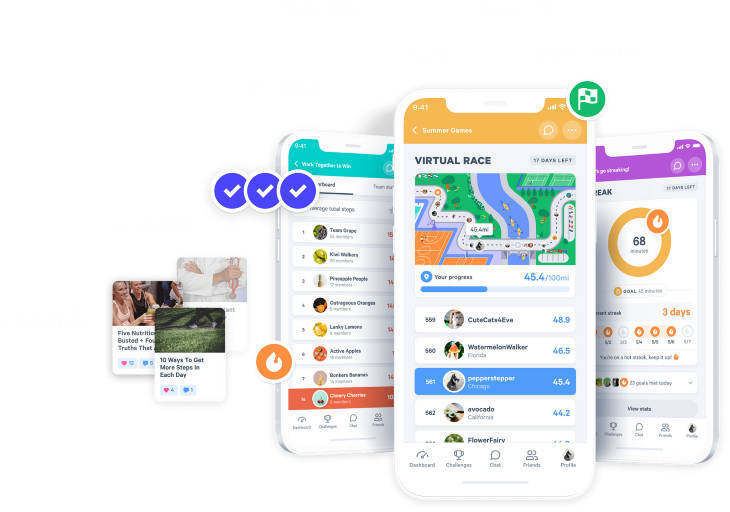
The goal gradient effect revolves around motivating users through their progress, fueling them to work harder to achieve their objectives. An essential aspect of leveraging this effect is personalization. When users feel like the experience is tailored to their needs, they can form a deeper personal connection with their goal.
Personalizing goal setting involves crafting the experience to align with users’ unique preferences, behaviors, and historical interactions. For example, if a user’s goal is to get fit, the product can customize their goals and recommendations based on their preferred exercises, fitness level, and past workout routines. This level of personalization ensures that users feel seen and understood, which can enhance their motivation and engagement with the product.
Providing tailored recommendations to each user can motivate them to continue working toward their goals, as they are influenced by the product’s guidance. This can be done by suggesting activities, tasks, or content that align with each user’s goals and might help them during their journey.
For example, a language learning app might recommend lessons and exercises based on the user’s chosen language and proficiency level.
When athletes train for a competition, they usually have a coach to guide them around what to work harder on and tell them their weak points. Think of adaptive interfaces as a coach that is with you throughout your journey to reaching your goal.
As users interact with a product, the interface learns from their behaviors and adjusts to highlight tips or action items that will help the user stay on track. For example, a financial planning app might alert a user of their unusually high spending behavior to bring awareness to how it might affect their goal.
Helping users break down their goals into smaller milestones can make them feel more attainable. Have your product support your users in defining achievable milestones throughout their journey.
For a productivity app, this could look like breaking down a to-do list into smaller checklist items. Users will feel a sense of accomplishment each time they check an item off their list, even if it’s a small step. Some progress is better than no progress, and setting achievable milestones makes it easier to start.
Whenever a product influences user behavior, it’s essential to consider the ethics of how it is done and the consequences of such practices. To leverage the goal gradient effect responsibly, we must prioritize our users’ well-being and avoid manipulating them through deceptive patterns.
While a product might be focused on increasing user engagement as much as possible, remember that users are people and they should be treated with respect. Pushing users too hard to achieve their goals can lead to burnout and unnecessary added stress in their life. Considering a comfortable pace of progression can ensure that your users’ mental and emotional health is not compromised while they strive toward their goals.
Using the goal gradient effect to deceive users into completing actions against their genuine interest is highly unethical. Products should never exploit people’s emotions without providing meaningful value back to them.
For example, progress bars shouldn’t show false levels of advancement and visuals shouldn’t be used to create a sense of accomplishment that’s not real. This is a quick way for users to lose their trust in the product and feel negative about using it. And not to mention the legal consequences that might result from manipulative practices, such as fines or lawsuits.
Duolingo is a language learning platform that uses gamification techniques to increase user engagement. It employs a point system and levels to track progress, the goal gradient effect enhances users’ motivation to learn languages.
To begin, users are asked to pick a goal of the number of minutes used per day, which categorizes them from casual to intense users. Goal setting is incorporated from the very start of the user’s journey.
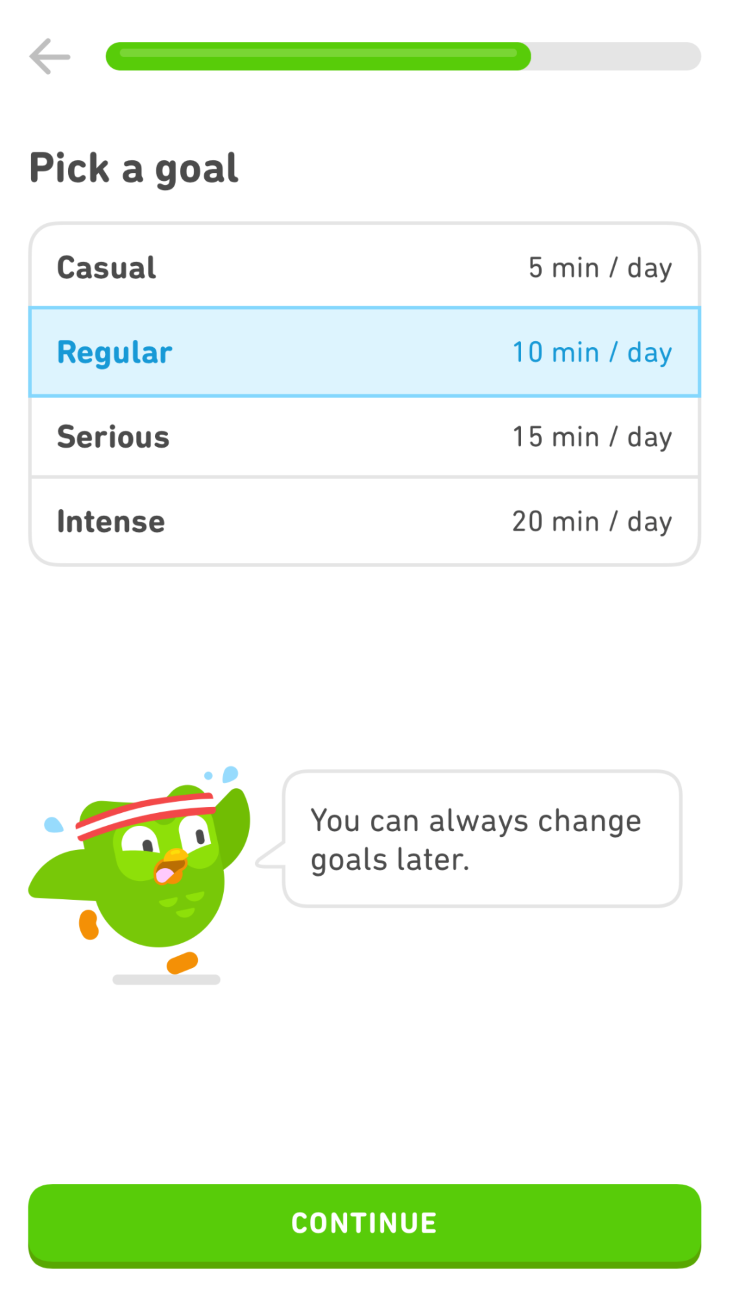
As a user completes lessons and earns points, they move up levels. Duolingo showcases their milestone achievements and incentivizes them to keep learning. As they approach their goals, the sense of achievement encourages consistent language practice and learning.
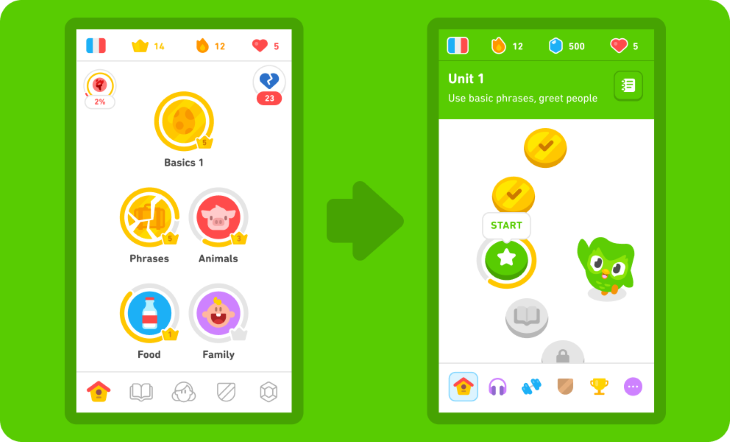
Duolingo uses circles that make up a path to represent the levels within each skill. This makes it easy for users to visualize how far they have come and how many levels they have left before achieving the next milestone.
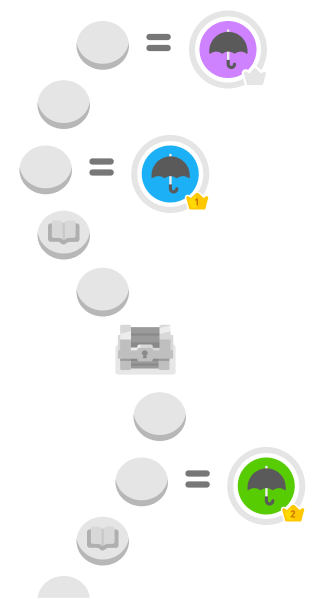
Duolingo also incorporates social aspects, such as Friends Quests, to help motivate users to study and learn with their friends. By competing in a Friends Quest together, users are able to hold each other accountable and congratulate their friends for completing milestones. Duolingo combines this sense of community with other visual techniques such as progress bars and badges, which all contribute to the goal gradient effect.
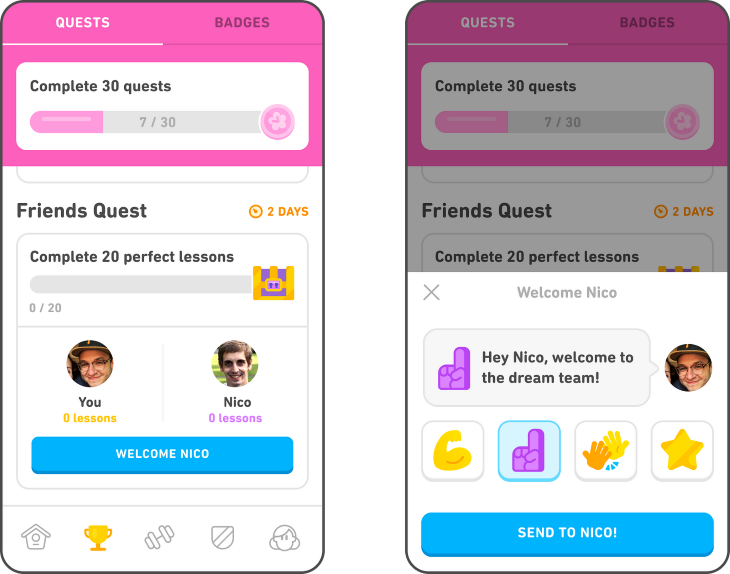
Mint is a personal finance management platform that helps individuals budget, track expenses, and work towards savings goals. The app uses a few different techniques to leverage the goal gradient effect in helping motivate users toward staying on track and achieving their goals.
Using visual graphics, Mint influences user behavior toward investing over saving to make their money grow quicker. By seeing the comparison with a compelling description beneath it, the app hopes to motivate users to invest their money and watch their accounts grow.
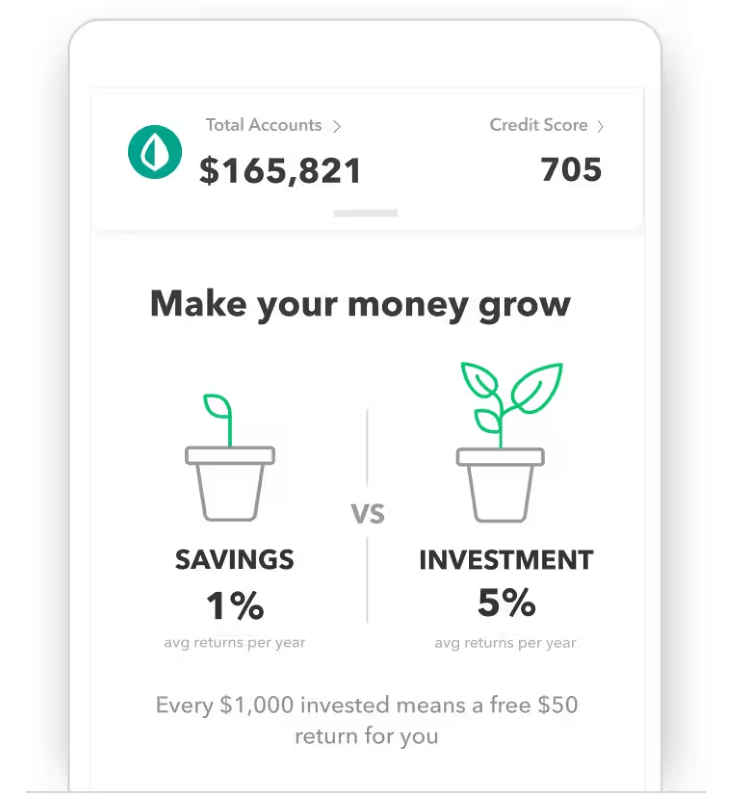
Mint uses visual elements such as progress bars and colors to indicate the user’s advancement toward their goals. Green and red progress bars make it easy for users to spot the areas in their budget that have gone over their spending limits and allow them to adjust their spending in order to stay on track. This helps individuals visualize how far they’ve come and how far they still have left to go.
The app also uses adaptive interfaces to alert the user if they start to fall off track, such as overspending in certain areas of their budget. These helpful bits of feedback keep users from straying too far away from their goals and keep the goal gradient effect alive.
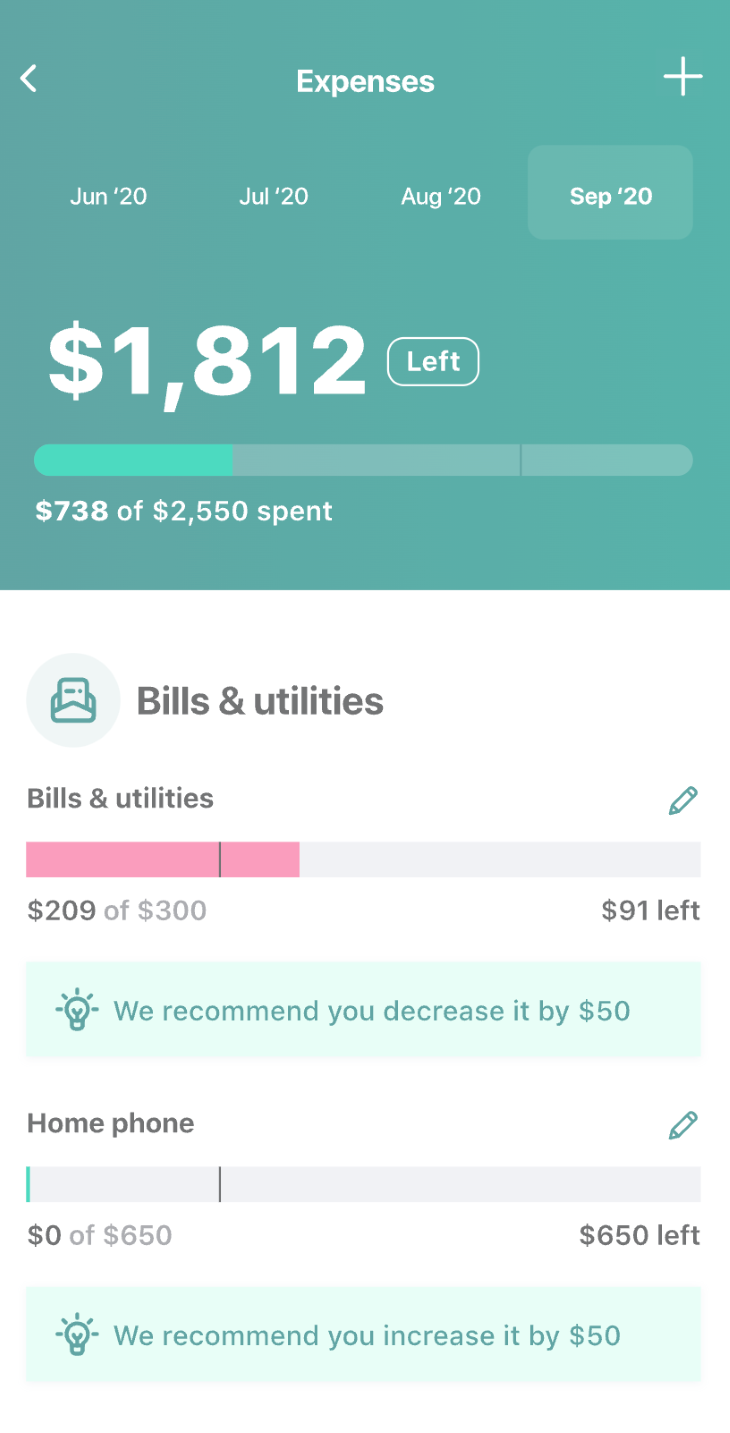
Mint personalizes each individual’s budgeting goal so that users can track what matters to them. Instead of creating a standard budget, users can include their personal expenses, whether it’s camping gear or golf lessons, that make their journey feel unique. Being able to create a goal that’s personalized to the individual can boost the connection with the product and motivate them to reach their goal even more.

While the goal gradient effect can be a powerful tool for motivating users, there are potential challenges and limitations that shouldn’t be ignored. People can be overly ambitious with goal setting, so if goals are not realistic, then it can lead to user burnout and goal abandonment.
To prevent this from happening, support users by helping them set realistic goals and breaking them down into smaller, achievable milestones. Also, provide resources for users to overcome challenges and not feel discouraged, such as helpful recommendations and feedback.
Although gamification can be effective at engaging users at first, they can become desensitized to rewards and incentives, which causes them to lose motivation and engagement with the product. To counter this long-term behavior, it can help to introduce a variety of different reward types as well as surprise rewards along the way to keep things interesting.
This creates an element of surprise to keep users engaged. You can also gradually increase the value of rewards as users advance to build a deeper sense of progression and accomplishment, as the further they advance, the more difficult rewards are to attain.
The goal gradient effect represents a powerful psychological principle that taps into human motivation and engagement. By understanding its mechanisms, product managers and UX designers can harness its potential in various ways within product design.
Progress tracking and personalized feedback are essential to building users’ commitment, while gamification techniques, such as rewards and incentives can amplify motivation. Incorporating some form of social proof and community can foster a sense of belonging and increase motivation as humans are competitive by nature. Also, personalizing experiences towards each individual can strengthen their connection with their goal, which helps with boosting user engagement.
Just remember to leverage the goal gradient effect in an ethical way by finding a balance between motivation and user well-being. By implementing responsible and sustainable design practices, we can address challenges such as goal abandonment and user burnout to ensure that our users stay healthy-minded and feel positive when using our products to reach their goals.
Header image source: IconScout
LogRocket's Galileo AI watches sessions and understands user feedback for you, automating the most time-intensive parts of your job and giving you more time to focus on great design.
See how design choices, interactions, and issues affect your users — get a demo of LogRocket today.

Small actions can have large consequences in complex systems. Here’s how UX designers can manage dependencies so users feel informed and in control rather than blocked or blindsided.

This article examines when hero sections are necessary in digital products, when they create friction, and how to evaluate them using UX goals, primary actions, user flow impact, and real-world alternatives.

AI speeds up tasks like research synthesis, ideation, and first-draft wireframes, but it can’t replace clarity, taste, or decision-making. Here’s a grounded look at what AI actually does well in UX right now.

Discover how to craft UX-friendly hero sections with examples, design tips, and strategies that drive engagement and conversion.